Introduction
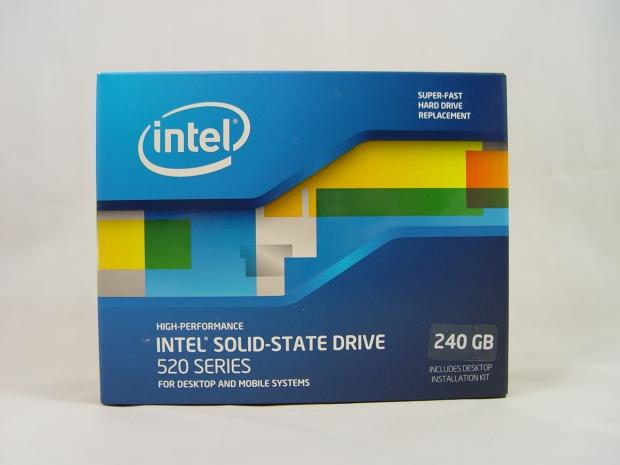
On paper the new Intel 520 Series appears to be just another Team SandForce release like several of the products we've looked at for the last thirteen months. The SF-2000 Series controllers hit media testing labs in December 2010 and client drives based on the consumer SF-2281 were on display at CES in 2011. Around the same time we started hearing about a high performance Intel SSD based on SandForce's first SATA III controller. Twelve months is a long time to wait for a rumor to turn into a retail product, but a steady pace of information coming our way kept the fabled SF-2281 controlled Intel SSD fresh in our minds.
Intel's SV and CV Validation Labs have been pictured and discussed online at length before. It's rumored that 10,000 hours of product testing is a good starting point with many products validated for an even longer amount of time. With thousands of systems on hand, Intel is able to validate products in ways other can only dream about.
When SandForce released their second generation solid state drive controller they were still playing with venture capital and had less than 200 employees company wide. The one area where SandForce was thin was product validation. SandForce has a validation department and many of their SandForce Driven partners played a role in optimizing firmware, but the combined efforts of Team SandForce is barely a blip on the radar compared to the massive resources Intel has tucked away in locations all over the world.
On release, the SF-2281 controlled client drives leaped to the top of performance charts, but for some, reliability and odd BSOD issues plagued these products. In our testing only two drives experienced issues. The first drive made it through standard testing, but ran into problems when deployed in a daily use system. The second drive failed to complete our standard benchmark procedures, having BSOD issues out of the box. Both drives were later fixed with a firmware update, but for a company like Intel, issues like these are unacceptable.
Intel has experienced their own issues with firmware in the past and they've learned quickly from their early mistakes. Intel was not going to release a new client SSD with known problems without addressing them thoroughly before a release. In the documentation provided to us Intel only included one line about firmware, but it said enough to make it clear that Intel was not just another copy and paste member of Team SandForce.
The Intel SSD 520 uses an LSI SandForce Flash Storage Processor with an Intel co-defined and validated firmware release for an Intel-unique implementation.
Little is truly known about the details that surround the unique implementation firmware built in part by Intel, but we know that, at least for now, only Intel has it and that makes the 520 Series a step above all others.
Specifications, Pricing and Availability
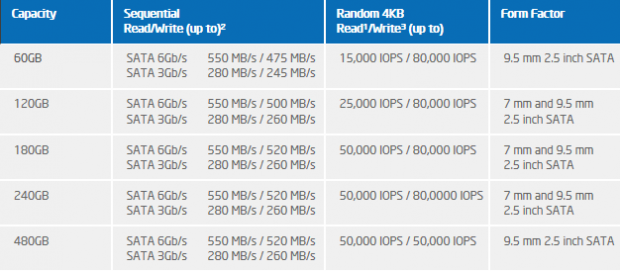
Intel's new 520 Series is the second SATA III SSD the company released to the masses. The 510 Series based on a Marvell controller competed in 2011 against a large number of SandForce SATA III drives and even a few other products based on the same Marvell controller like the Crucial m4. The 510 Series was a very good product, but lacked the exposure given to the SandForce products. When you compete in the high-end market the spotlight generally only shines on products featuring the highest performance numbers. If you can't beat them, join them.
The Intel 520 Series is already available in the channel in the following capacity sizes, 60GB, 120GB, 180GB, 240GB and a massive 480GB for those who need a lot of high speed storage. With the exception of the 180GB model, these are the standard SandForce user capacities that we've been looking at for years. SandForce based drives for the consumer market use a 7% overprovision instead of DRAM cache for background activity.
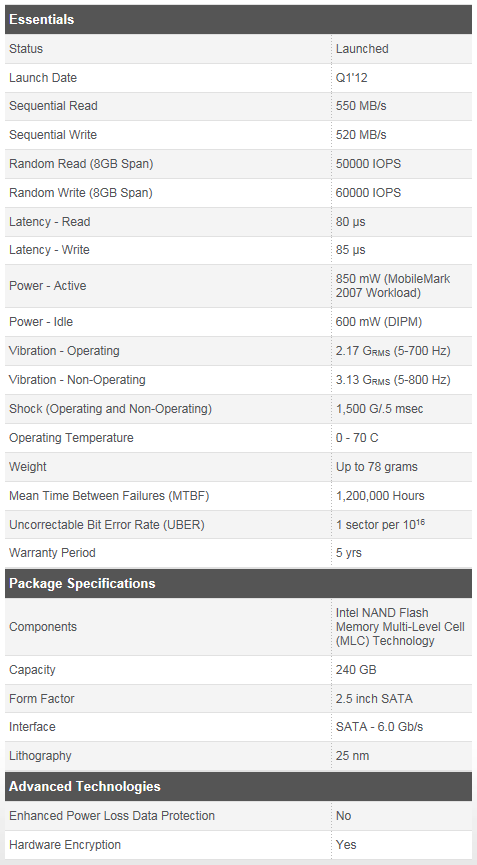
Intel always does a very good job when it comes to listing product specifications. One thing we noticed right from the start is that Intel doesn't use the typical SandForce buzz words in their marketing like Durawrite or RAISE. These technologies are included in the flash processor unit, but not marketed heavily.
Today we're looking at the 240GB model that uses 256GB of Intel premium 25nm synchronous flash. The 256GB 520 Series has a sequential read speed of 550MB/s and a sequential write speed of 520MB/s. Random read IOPS are speced at 50K while random write IOPS are 60K. The drive uses an AES-256 engine in XTS mode for encryption; the SF-2281 also uses an AES-128 engine in CRT mode for good measure to keep your data secure.
We found all five capacities of 520 Series available at Newegg prior to writing. The 60GB is currently priced at 149.99, the 120GB is 229.99, the 180GB is 369.99 and the 240GB model we are testing today comes in at 539.99 and the uber 480GB drive costs 1049.99. These are not the most expensive SF-2281 controlled drives on the market today, but they are quite a bit more expensive than the Vertex 3 drives. Measuring at the 240GB capacity size the, the Intel 520 holds a $190 price premium over the Vertex 3 240GB. We expect this gap to shrink rapidly over the next couple of months.
Intel can easily justify their price premium with their extensive validation process alone, but the accessory package for the 520 Series is more robust than many other products on the market. For starters the 520 Series products carry a full five year warranty; the industry standard these days is three years with very few companies going against the grain. Intel also includes a desktop adapter bracket making it easier to install the 2.5" form factor drive in a 3.5" drive bay. SATA power and data cables are also included with the mounting screws for installing the drive in a bracket.
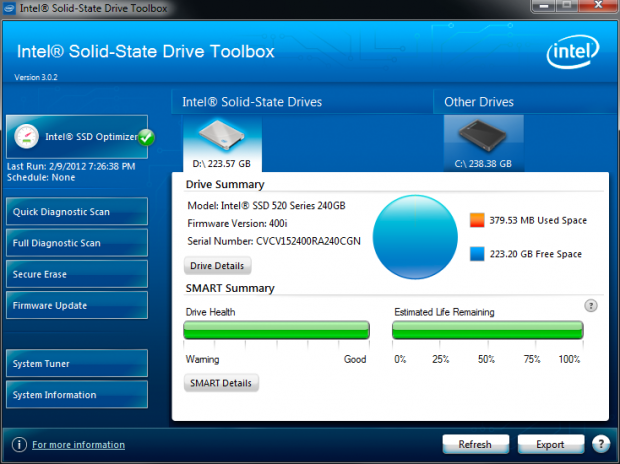
Often overlooked, but never out of mind is Intel's software package that ships with their SSDs. The Intel SSD Toolbox was one of the first consumer software tools for drive optimization and still one of the best available. Inside users can see the status of their drive, make a handful of Windows optimizations, secure erase their drive and update the SSDs firmware. Intel also includes a Software Migration Tool that allows you to quickly and easily clone an existing drive. Look for a full software write up in a few days that cover these software tools.
The Packaging

Intel uses a very colorful package for the new 520 Series drive, but we don't see any performance numbers. These drives will make it into retail channels like Fry's and possibly other big box stores like Best Buy. On the front we see a High Performance marking and at the lower right the capacity size, but nothing that tells a retail guy this is the product to buy.
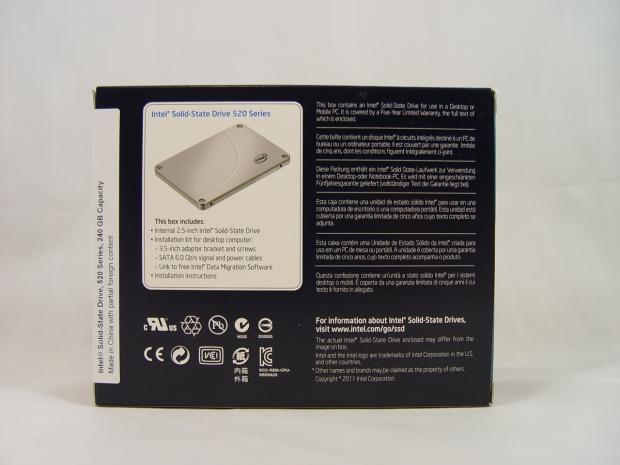
On the back we found some general information about the 520 Series in several languages and a list of what is included.
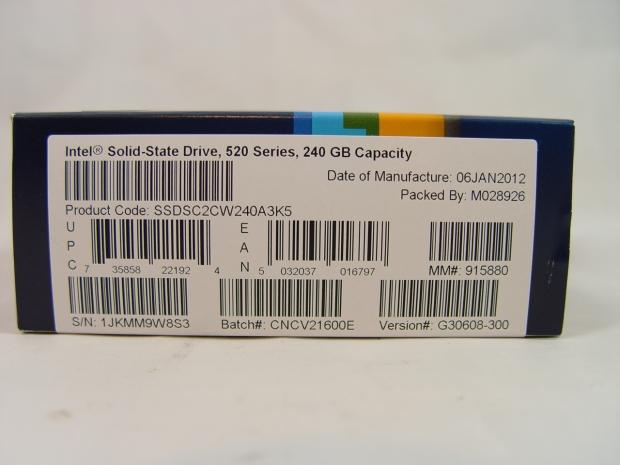
Intel's bar code sticker is placed on the side of the package. Our drive was born January 6, 2012.
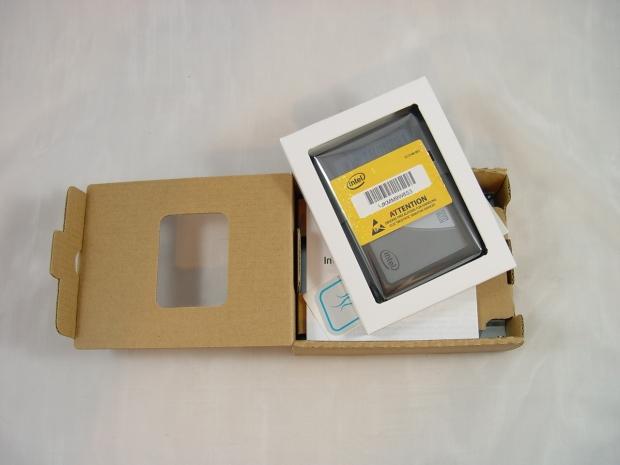
Inside we found the drive packed well and separated from the accessory package.
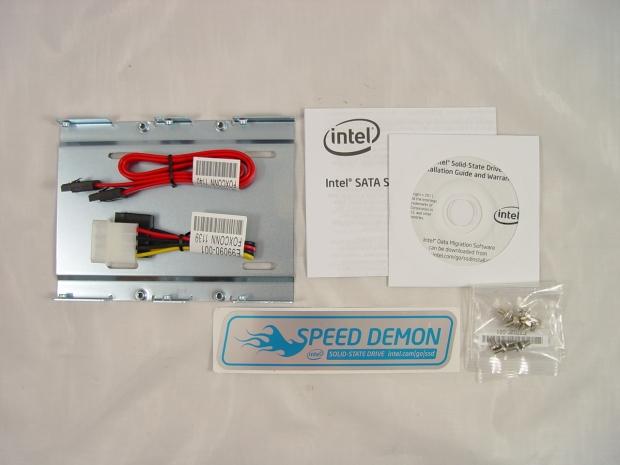
The number of accessory goodies is extensive and even includes a disk with the software tools.
Intel 520 Series 240GB SSD
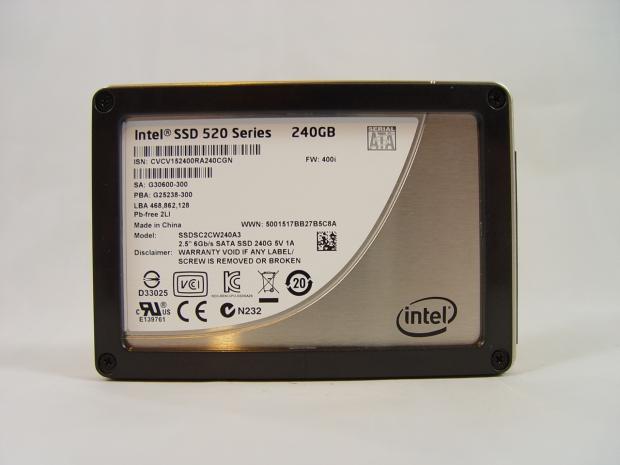
Here we get our first look at the drive. Making its way back into the client drive is the 2mm black ring used to turn a 7mm drive into a 9mm. This wasn't used on the 510 Series products, but has appeared several times on Intel's SSD products.
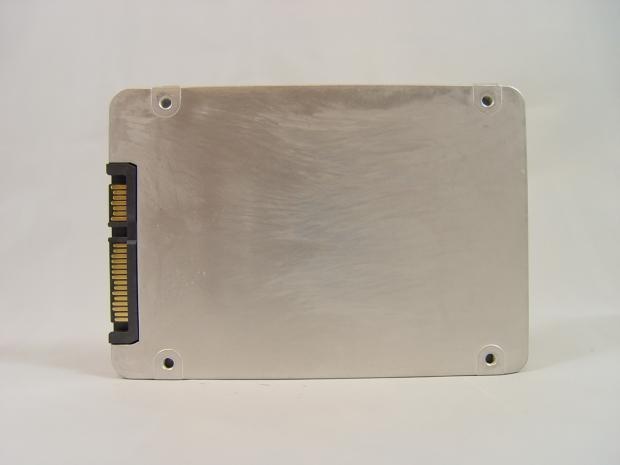
The 520 Series uses the standard mounting positions on the back of the drive. These are mainly used in notebook drive sleds and desktop adapter brackets.

The side mounting points are also where they should be. The 520 Series uses an aluminum cover just under the plastic 2mm ring.
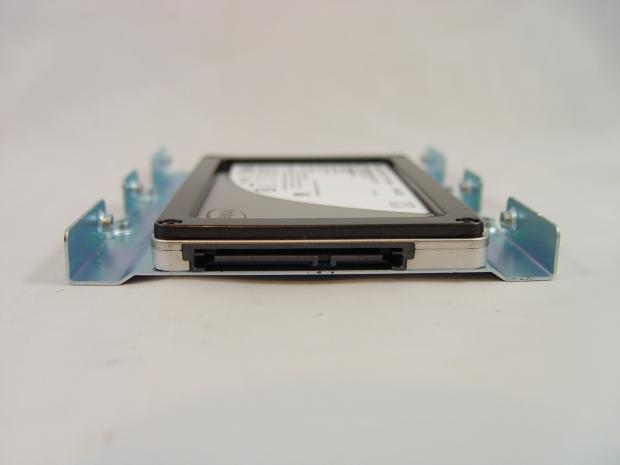
The SATA power and data points are offset to the left side where they should be to meet the 2.5" spec, but the desktop adapter bracket doesn't offset the drive to the left. If you are using a case with a backplane and drive sleds not built for 2.5" drives this can be an issue. You will need to purchase a new backplane, one that installs the drive to the far left side so the SATA power and data connectors are In line with the backplane.
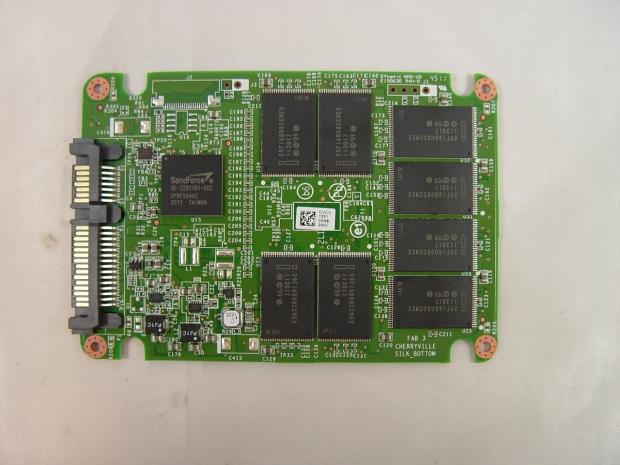
On first inspection the Intel 520 Series PCB isn't that much different than the reference design SandForce used at the launch of the SF-2281. There are a few changes from what I can see, but Intel didn't do anything crazy with the design. On this side we see the SandForce SF-2281 controller and eight of the sixteen total 25nm synchronous flash chips.
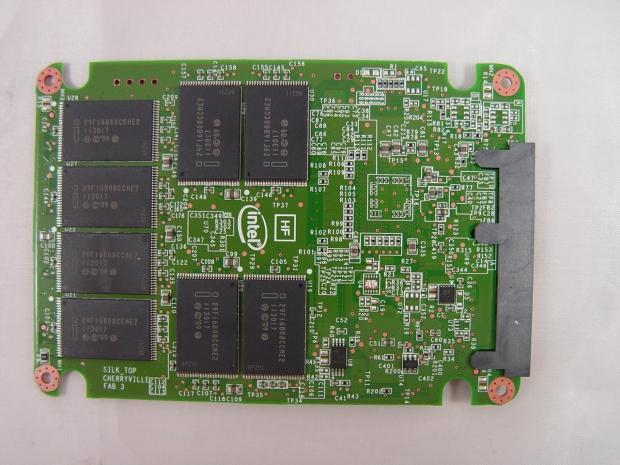
The other eight NAND flash chips are on the back of the PCB.
Benchmarks - Test System Setup and ATTO Baseline Performance
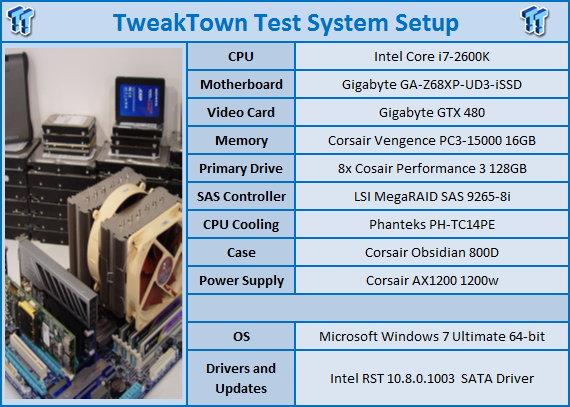
We would like to thank the following companies for supplying and supporting us with our test system hardware and equipment: AVADirect, GIGABYTE, Cooler Master, LSI, Corsair and Noctua.
You can read more about TweakTown's Storage Product Testing Workstation and the procedures followed to test products in this article.
In order to fully utilize SATA III you need a system with native SATA III support. P67, Z68 and X79 systems are preferred, but AMD has made advances in their newer SATA III systems as well. Older X58 systems with Marvell based SATA III do not deliver the same high levels of performance, so we recommend newer systems with native SATA III when possible.
ATTO Baseline Performance
Version and / or Patch Used: 2.34
ATTO is used by many disk manufacturers to determine the read and write speeds that will be presented to customers.
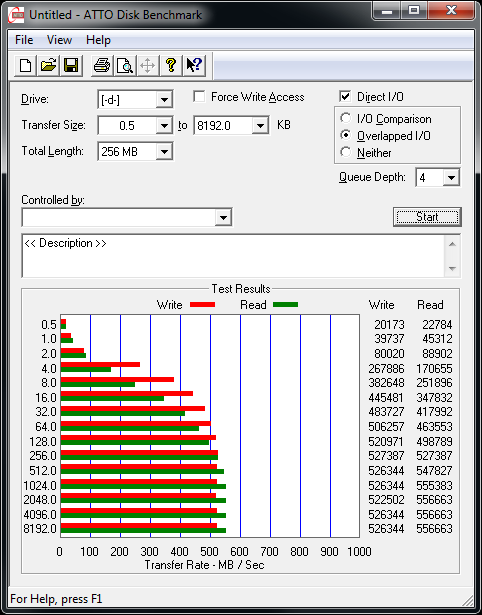
The Intel 520 Series 240GB drive manages to read compressible data at just over 556MB/s. When writing the same drive achieves just over 526MB/s. The results are a little higher than Intel's claimed performance and in line with several of the newer SF-2281 controlled drives we've tested in the last few months.
Benchmarks - HD Tune Pro
HD Tune Pro
Version and / or Patch Used: 4.00
Developer Homepage: http://www.efdsoftware.com
Product Homepage: http://www.hdtune.com
HD Tune is a Hard Disk utility which has the following functions:
Benchmark: measures the performance
Info: shows detailed information
Health: checks the health status by using SMART
Error Scan: scans the surface for errors
Temperature display
HD Tune Pro gives us accurate read, write and access time results and for the last couple of years has been gaining popularity amongst reviewers. It is now considered a must have application for storage device testing.
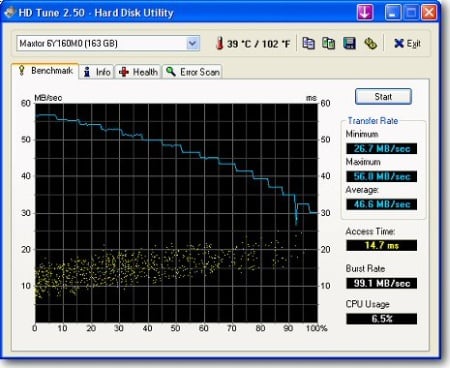
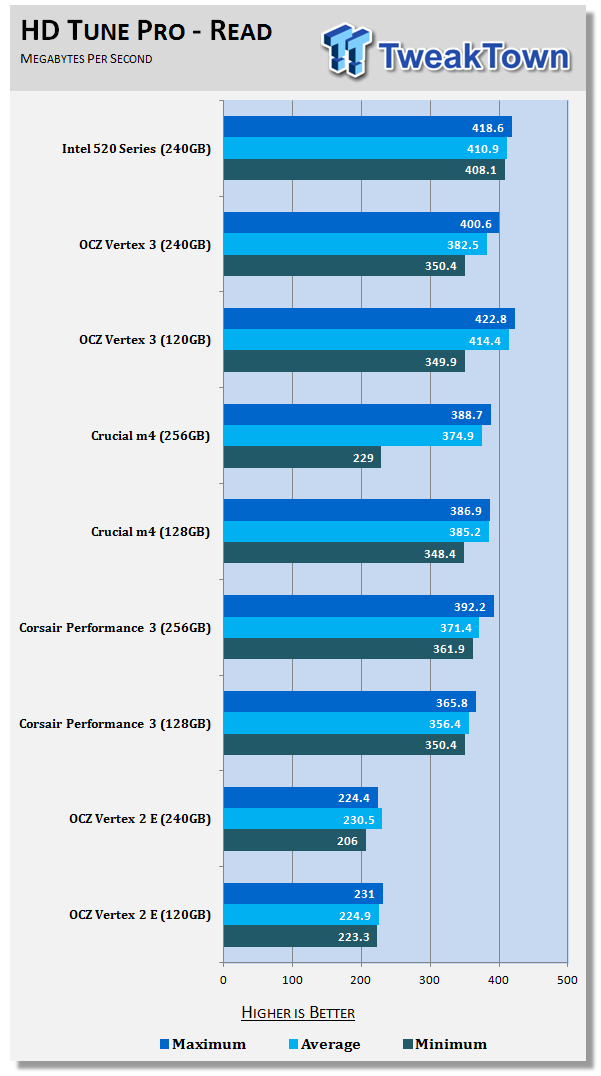
The SandForce Driven partners received a performance firmware upgrade a couple of months ago so we don't expect to see the Intel 520 Series run away from the pack when it comes to performance. The 520 Series does have a newer firmware from what we can tell (by the AS SSD Copy Test). Our first test starts with a clean drive and as we progress the drive starts to get 'dirty'. The average read across the drive is 410MB/s and the maximum and minimum speeds stay very close to the average. This is the performance we are looking for just out of the box.
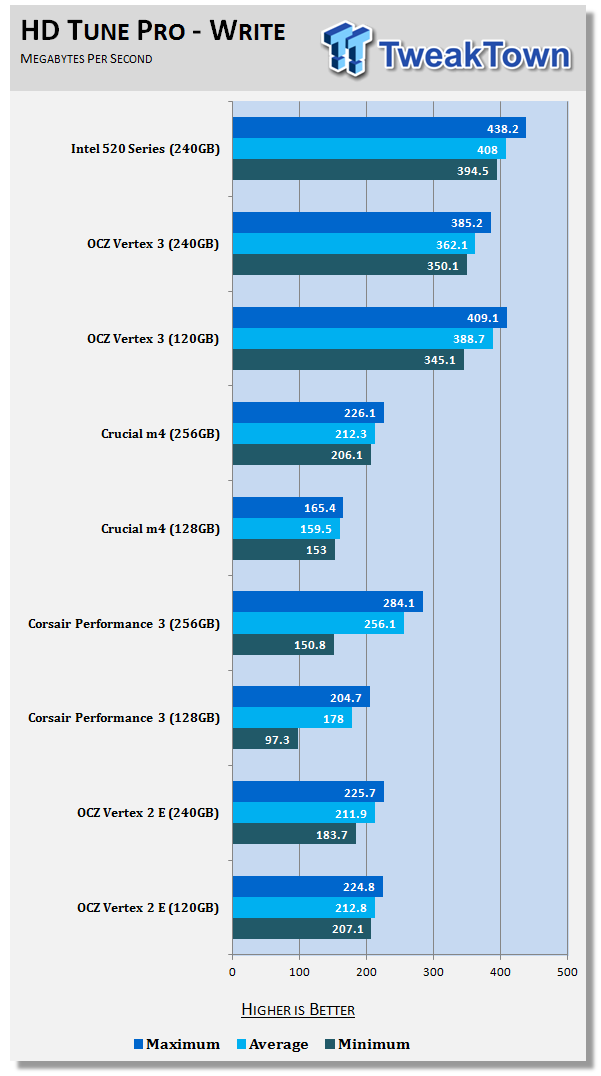
HD Tune Pro uses compressible data so while we are writing on average at 408MB/s (the host writes) the Intel 510 Series is actually writing much less to that to the flash. Again, the minimum and maximum write speeds are very close to the average and the benchmark result chart didn't show any abrupt changes in performance over the predictable waves in the graph.
Benchmarks - AIDA64 Random Access Time
AIDA64 Random Access Time
Version and / or Patch Used: 1.60
Developer Homepage: http://www.aida64.com
Product Homepage: http://www.aida64.com
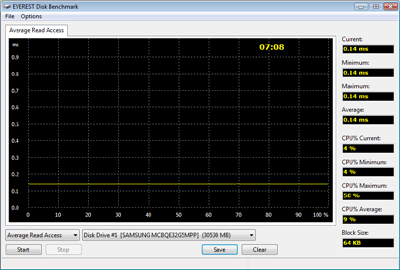
AIDA64 offers several different benchmarks for testing and optimizing your system or network. The Random Access test is one of very few if not only that will measure hard drives random access times in hundredths of milliseconds as oppose to tens of milliseconds.
Drives with only one or two tests displayed in the write test mean that they have failed the test and their Maximum and possibly their Average Scores were very high after the cached fills. This usually happens only with controllers manufactured by JMicron and Toshiba.
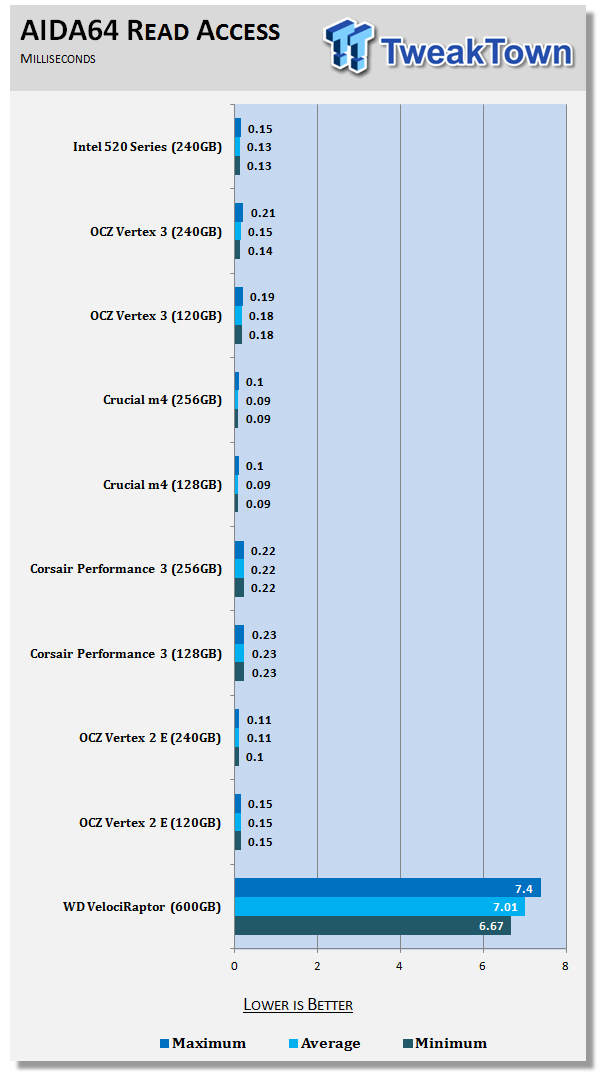
When you come from a platter drive the first thing you notice is how fast and smooth an SSD feels when doing just about everything. Since an SSD is without moving parts all of the latency is electrical instead of mechanical. Electrons move at the speed of light, it sounds a bit like science fiction, but your computer also feels like it was teleported from the future. If you are only running a mechanical drive in your computer, your user experience is suffering because of it.
In the read access test we observed an average latency of just .13 milliseconds. That escalated to .15ms at peak so the 510 Series is able to hold a solid latency time while reading data.
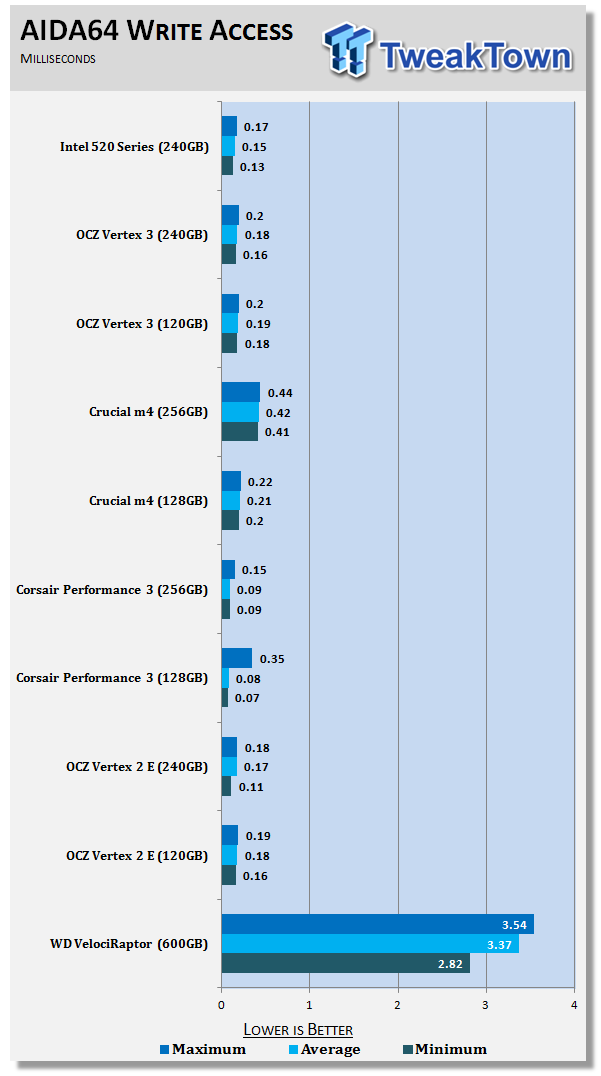
Both the read and write access times were very good on the Intel 520 Series. The drive managed to outperform the Vertex 3 240GB in both tests. It appears Intel managed to further optimize latency with their new high performance SSD beyond what we've seen with the standard SandForce firmware.
Benchmarks - CrystalDiskMark
CrystalDiskMark
Version and / or Patch Used: 3.0 Technical Preview
Developer Homepage: http://crystalmark.info
Product Homepage: http://crystalmark.info/software/CrystalDiskMark/index-e.html
Download here: http://crystaldew.info/category/software/crystaldiskmark
CrystalDiskMark is a disk benchmark software that allows us to benchmark 4K and 4K queue depths with accuracy.
Key Features:-
* Sequential reads/writes
* Random 4KB/512KB reads/writes
* Text copy
* Change dialog design
* internationalization (i18n)
Note: Crystal Disk Mark 3.0 Technical Preview was used for these tests since it offers the ability to measure native command queuing at 4 and 32.
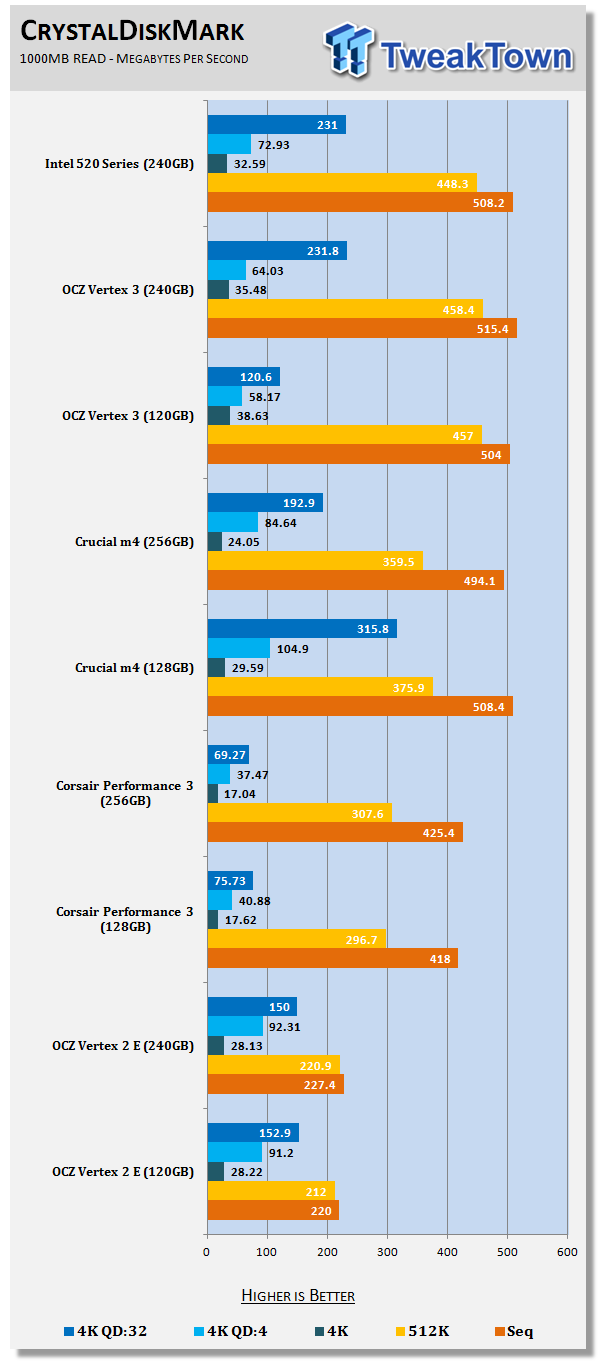
CDM uses incompressible data for this test and we are looking at 4K and native command queuing performance. The 4K numbers are in line with the Vertex 3 240GB performance almost exactly except for the 4K 4 command read where the 510 Series 240GB drive is a little faster.
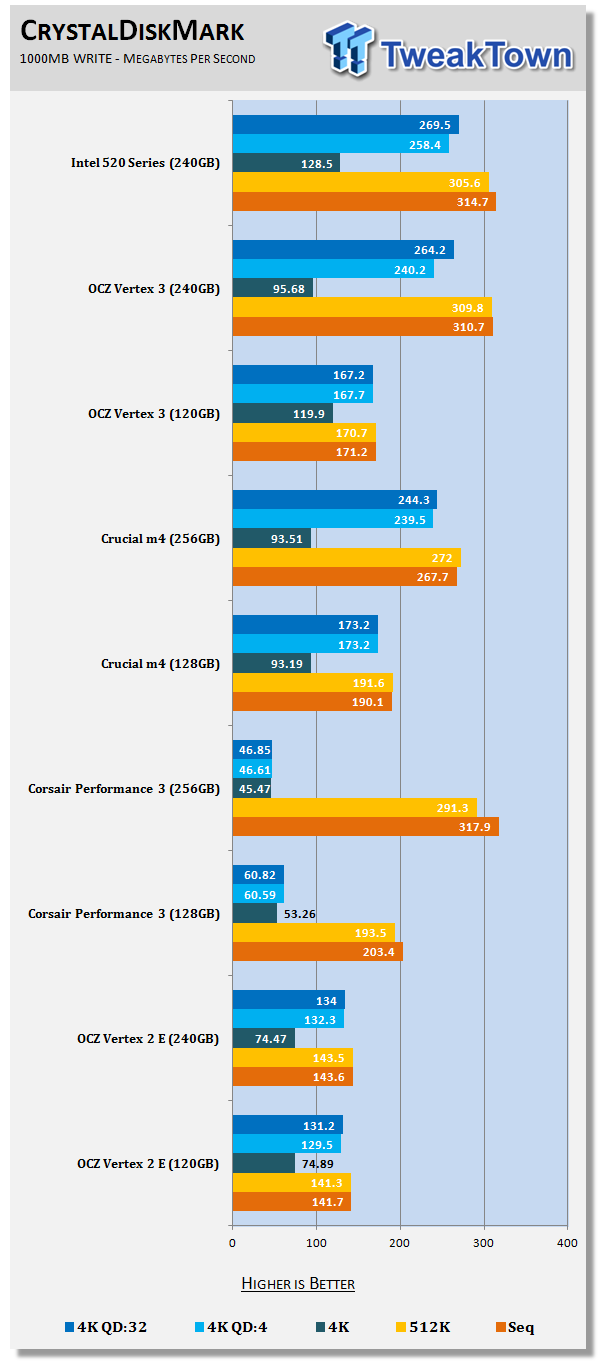
The same test, just writing data this time shows an increase across the board over the Vertex 3 240GB when working with 4K data. The single command test is over 30MB/s faster, but that number is reduced as high command depths are added.
Benchmarks - PCMark Vantage Hard Disk Tests
PCMark Vantage - Hard Disk Tests
Version and / or Patch Used: 1.0.0
Developer Homepage: http://www.futuremark.com
Product Homepage: http://www.futuremark.com/benchmarks/pcmark-vantage/

PCMark Vantage is the first objective hardware performance benchmark for PCs running 32 and 64 bit versions of Microsoft Windows Vista. PCMark Vantage is perfectly suited for benchmarking any type of Microsoft Windows Vista PC from multimedia home entertainment systems and laptops to dedicated workstations and high-end gaming rigs. Regardless of whether the benchmarker is an artist or an IT Professional, PCMark Vantage shows the user where their system soars or falls flat, and how to get the most performance possible out of their hardware. PCMark Vantage is easy enough for even the most casual enthusiast to use yet supports in-depth, professional industry grade testing.
FutureMark has developed a good set of hard disk tests for their PCMark Vantage Suite. Windows users can count on Vantage to show them how a drive will perform in normal day to day usage scenarios. For most users these are the tests that matter since many of the old hat ways to measure performance have become ineffective to measure true Windows performance.

HDD1 - Windows Defender
HDD2 - Gaming
HDD3 - Windows Photo Gallery
HDD4 - Vista Startup
HDD5 - Windows Movie Maker
HDD6 - Windows Media Center
HDD7 - Windows Media Player
HDD8 - Application Loading
In the canned version of PCMark's Vantage HDD Test we managed to hit 79K marks, the highest we've recorded on a SandForce SF-2281 controlled drive. The second highest was 78K and we were very pleased with the results. We prefer a different method of running this test, though.
Benchmarks - PCMark Vantage - Drives with Data Testing
For a complete breakdown on the Drives with Data Testing please read this article. You will be able to perform this test at home with the files provided in the article - full instructions are included.
- Brief Methodology
SSDs perform differently when used for a period of time and when data is already present on the drive. The purpose of the Drives with Data testing is to show how a drive performs in these 'dirty' states. SSDs also need time to recover, either with TRIM or onboard garbage collection methods.
Drives with Data Testing - 25%, 50%, 75% Full States and Dirty / Empty Test
Files needed for 60 (64GB), 120 (128GB), 240 (256GB)
60GB Fill - 15GB, 30GB, 45GB
120GB Fill - 30GB, 60GB, 90GB
240GB Fill - 60GB, 120GB, 160GB
Empty but Dirty - a test run just after the fill tests and shows if a drive needs time to recover or if performance is instantly restored.

HDD1 - Windows Defender
HDD2 - Gaming
HDD3 - Windows Photo Gallery
HDD4 - Vista Startup
HDD5 - Windows Movie Maker
HDD6 - Windows Media Center
HDD7 - Windows Media Player
HDD8 - Application Loading
In our own version of Vantage we add data to the drive to simulate what type of performance you would see in the real-world.
Using the drive half full (the middle blue plot on the graph) we can see how the 520 Series with synchronous flash compares to the OCZ Agility 3 with asynchronous flash. There is a large performance difference between the two, but the OCZ Vertex 3, another synchronous flash drive using IMFT 25nm flash, is very close to the 520 Series.
Benchmarks - AS SSD
AS SSD Benchmark
Version and / or Patch Used: 1.2.3577.40358
Developer Homepage: Alex Intelligent Software
Product Homepage: Alex Intelligent Software
Download here: http://www.alex-is.de/PHP/fusion/downloads.php?cat_id=4&download_id=9
AS determines the performance of Solid State Drives (SSD). The tool contains four synthetic as well as three practice tests. The synthetic tests are to determine the sequential and random read and write performance of the SSD. These tests are carried out without the use of the operating system caches.
In all synthetic tests the test file size is 1GB. AS can also determine the access time of the SSD, the access of which the drive is determined to read through the entire capacity of the SSD (Full Stroke). The write access test is only to be met with a 1 GB big test file. At the end of the tests three values for the read and write as well as the overall performance will be issued. In addition to the calculated values which are shown in MB/s, they are also represented in IO per seconds (IOPS).
Note: AS SSD is a great benchmark for many tests, but since Crystal Disk Mark covers a broader range of 4K tests and HD Tune Pro covering sequential speeds, we will only use the Copy Benchmark from AS SSD.
- Copy Benchmark
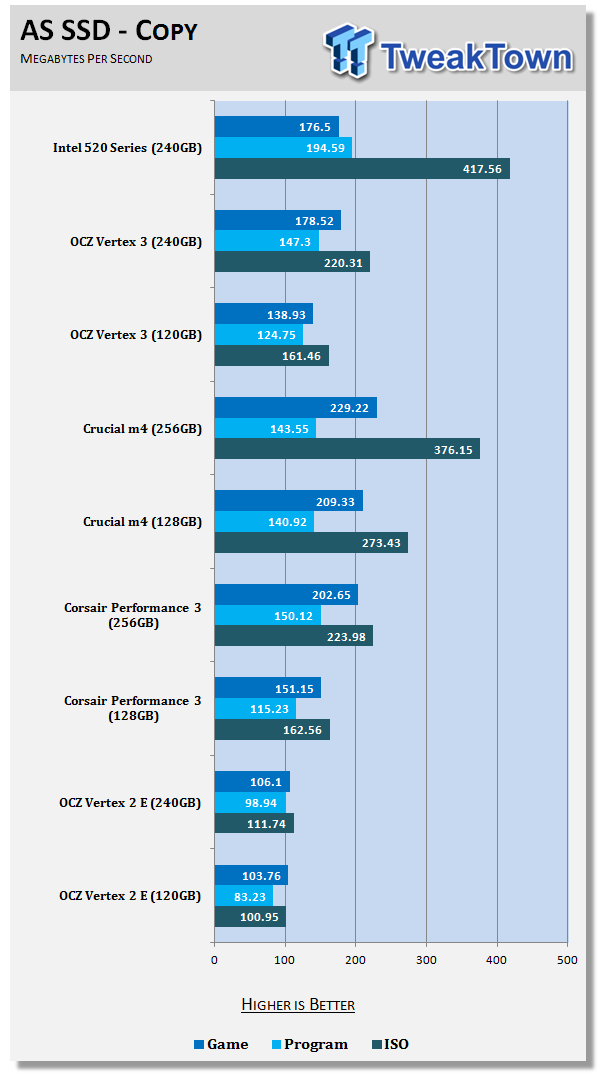
To date we've only seen a handful of SandForce SF-2281 based drives run the ISO test anywhere close to the Intel 520 Series. SandForce and a few of their partners have worked really hard to increase the file transfer speeds, an area usually dominated by the Marvell controlled drives.
Benchmarks - Passmark
Passmark Advanced Multi-User Tests
Version and / or Patch Used: 6.1
Developer Homepage: http://www.passmark.com
Test Homepage: http://www.passmark.com
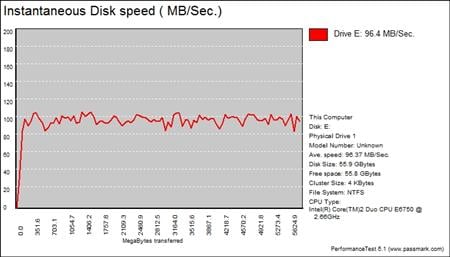
Many users complain that I/O Meter is too complicated of a benchmark to replicate results so my quest to find an alternative was started. Passmark has added several multi-user tests that measure a hard drives ability to operate in a multi-user environment.

The tests use different settings to mimic basic multi-user operations as they would play out on your server. Variances is read / write percentage as well as random / sequential reads are common in certain applications, Web Servers read nearly 100% of the time while Database Servers write a small amount of data.
The Workstation test is the only single user environment and will be similar to how you use your system at home.
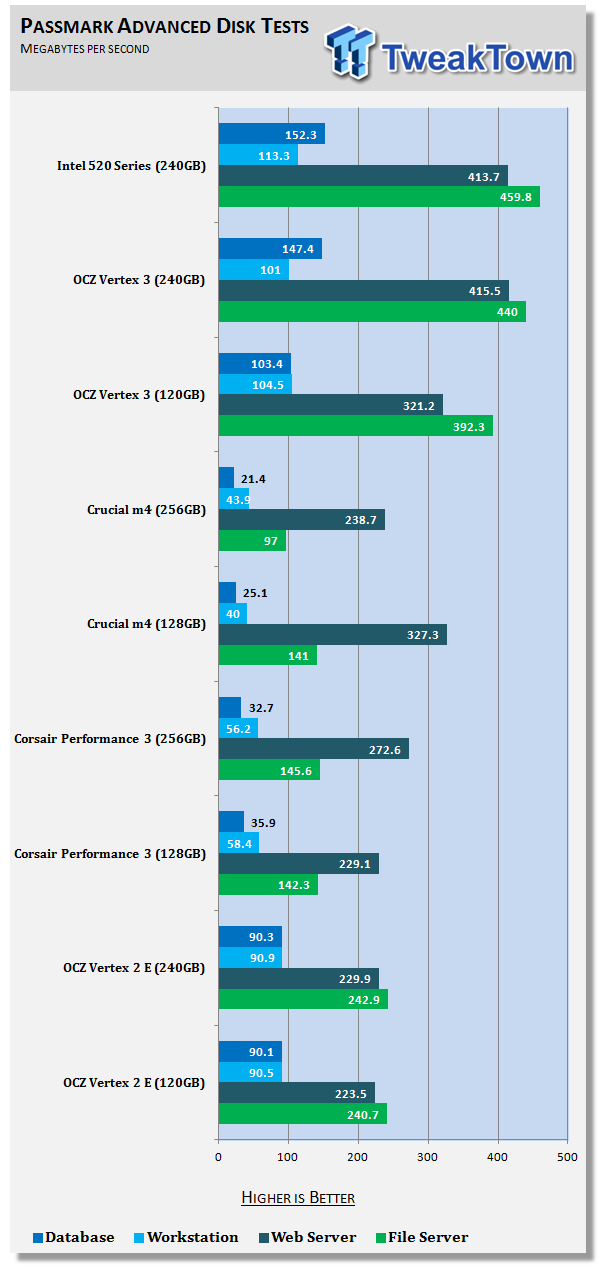
Given the new reliability standards and validation testing Intel put into the 520 Series we wouldn't be surprised to hear about these drives making their way into the data center. Last year we attended a couple of events and spoke with data center administrators and learned that low cost MLC SSDs were indeed being used at the server level and their popularity was growing.
The Intel 520 Series is very fast when performing server level tasks. Only time will tell though how the additional time in validation aids reliability.
Final Thoughts
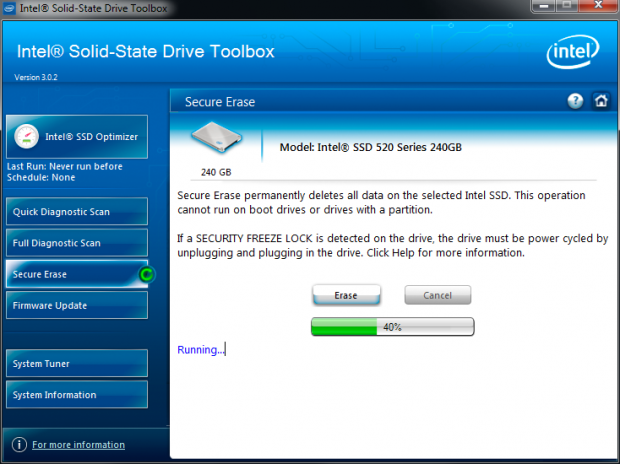
There are three key areas where the new Intel 520 Series stands out. The most obvious is the performance; this is the fastest SF-2281 controlled 2.5" drive we've tested to date. The second is the Intel validation testing that went into the drive, also an area where Intel surpassed other drive makers. The third is the ease of use and features found in the Intel SSD Toolbox which is more robust than the software offered by any other drive manufacture. The real question, though, is if these are enough to justify the premium price you'll have to pay.
Let's start out with the performance. The Intel 520 Series is the fastest we've tested to date and there are only a small number of drives we've yet to see with a 2.5" form factor. Every Intel SSD on the market has been followed with a number of firmware updates, some increasing performance after purchase. With the amount of testing that Intel already has logged with the 520 Series we can't say for sure if that will happen again, but I'd bet on a slight performance improvement later down the line. Rest assured, the drive is fast out of the box, you really couldn't ask for more performance or feel let down with what you are getting.
Intel's validation testing is one area that we have to believe in on faith. Intel didn't go into a lot of detail about their testing or unique firmware shipping only with the 520 Series. In the past Intel has received an egg on their face and needed to quickly make corrections to problems missed during testing. Only time will tell if Intel missed an issue with the new SandForce controlled drive. One thing we do know is if Intel has an issue the problem will be addressed quickly. We say this based on Intel's track record of dealing with issues related to their products. The big SF-2281 issue that was widely reported took several months for SandForce to address and even users who didn't experience the problem were worried that it may affect their drives. Those issues were eventually corrected, but the several month wait was stressful for everyone. By the time a fix was released several consumer had already swore off SandForce products completely, those users can now take a serious look at the 520 Series knowing that Intel is involved and brings with them the resources needed to keep this sort of thing from happening again.
The final physical area is the accessory package that Intel ships with the 520 Series. All of your bases are covered from cables to a desktop adapter bracket. On the software side we mentioned the Intel SSD Toolbox which is one of the most robust available. It's too bad this isn't something that works with all SSDs because it is a very nice piece of software. You can chalk this one up again to Intel's resources and experience when making solid state drives.
So far Intel has impressed us with their 520 Series 240GB drive, a solid Honor Role Report Card with A+s across the board. At this time though the price of the 520 Series gets a big fat C- written in red ink. If I was a teacher the note would read, Intel, you can do better than this! At the time of writing Newegg lists the OEM 240GB model "bare drive" at 539.99 and the full kit model as 549.99 USD. As you know all new to market products carry a price premium, so we aren't too worried about these drives staying at these pricing levels for too long. What we really want to know is how low they will drop to and how fast it will happen. At nearly $200 more than an OCZ Vertex 3 240GB, I'd have to say wait and see what happens on the price. Then you have to ask yourself just how much more you will pay for Intel's unique firmware, industry leading five year warranty and extensive accessory package. Is $100 more within reason? That is something you will need to justify on your own because personal finances are out of my scope and not easily quantified by a third party.
Spending your enterprise dollars on the other hand is a lot easier for me to lay claim to. With an increasing number of servers being treated to lower cost MLC drives, Intel's extensive validation will pay off when you can't spend a day swapping drives around and require the best the market has to offer.
Intel's 520 Series is the best the market has to offer, but for consumers, the price premium will need to shrink before the extras justify the expense.

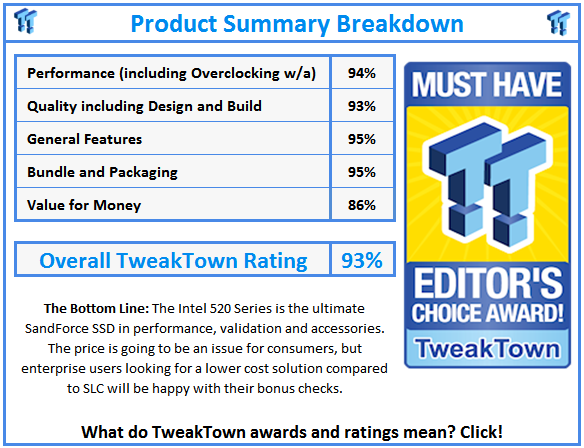
 United
States: Find other tech and computer products like this
over at
United
States: Find other tech and computer products like this
over at  United
Kingdom: Find other tech and computer products like this
over at
United
Kingdom: Find other tech and computer products like this
over at  Australia:
Find other tech and computer products like this over at
Australia:
Find other tech and computer products like this over at  Canada:
Find other tech and computer products like this over at
Canada:
Find other tech and computer products like this over at  Deutschland:
Finde andere Technik- und Computerprodukte wie dieses auf
Deutschland:
Finde andere Technik- und Computerprodukte wie dieses auf